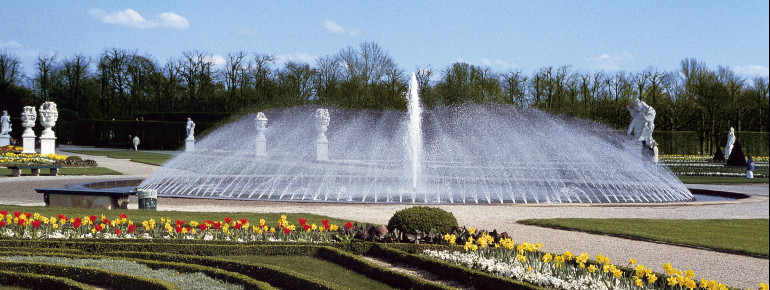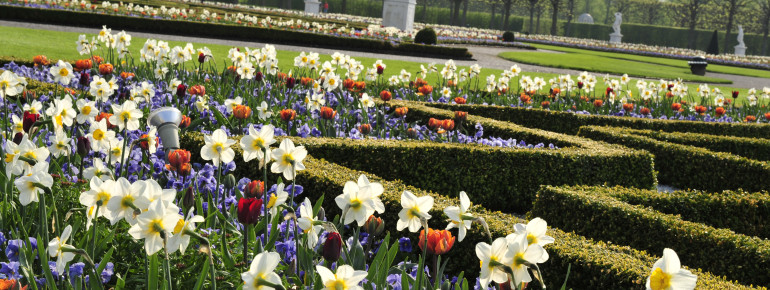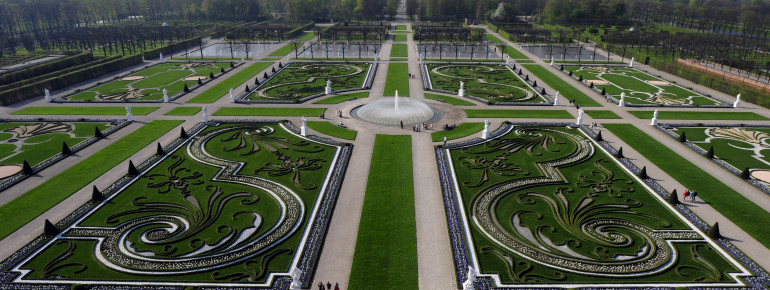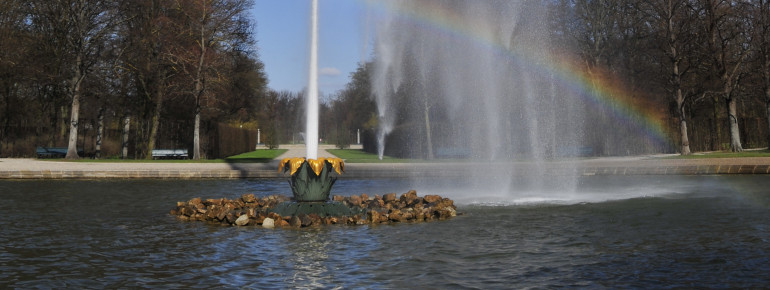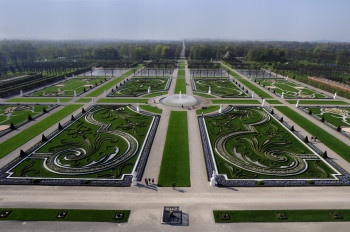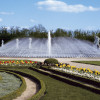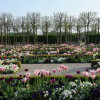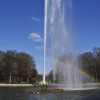Contents
Description
The Herrenhäuser Gardens in Hanover are among the most beautiful parks in Germany. They consist of four gardens: the Great Garden and the Mountain Garden in Herrenhausen, as well as the Georgengarten and the Welfengarten, which are located in the Nordstadt district.
Large garden
The Great Garden forms the baroque core of the Herrenhäuser Gardens and has remained almost unchanged. The approximately 50 hectare complex with the large fountain, the maze and the garden theatre serves every year as a backdrop for many art, music and garden festivals as well as the annual International Fireworks Competition. The Great Garden also houses Herrenhausen Palace, which was rebuilt after its destruction in the Second World War and now, after its completion in 2013, serves as a congress centre and museum. Next to the castle there is also a grotto, which was redesigned in 2003 by the artist Niki de Saint Phalle, the creator of the world-famous Nanas.
Mountain garden
The Berggarten, originally a vegetable and cultivation garden, is today one of the oldest botanical gardens in Germany. Its display houses and theme gardens show 11,000 different plants from the various climatic zones of the world, as well as the largest collection of orchids in Europe. The rainforest house, built in 2000, was converted into a Sealife aquarium six years later, while preserving the tropical landscape.
Georgengarten
At the centre of this English landscape park is the Georgenpalais, which today houses the Wilhelm Busch Museum with its caricatures and critical graphics. Near the palace stands on a peninsula the Leibniz temple erected in honour of the scholar Gottfried Wilhelm Leibniz. In 1696 Leibniz had made a breakthrough with the water supply of the gardens and the operation of the up to 70 meter high fountain.
Guelph garden
In the Welfengarten, which lies east of the Georgengarten, is the "Schloss Monbrillant". This former residence of the Count of Platen is today the seat of Leibniz Universität Hannover and the associated landscape garden, like the Georgengarten, serves as a public park.
Historical Information
In 1638, Duke Georg von Calenberg laid out a garden near "Höringehusen" to supply the Hanover court. This former village is today known under the name Herrenhausen as a district of Hannover. The garden made Herrenhausen a cultural centre of attraction in Europe and has developed into a piece of jewellery, the centre of which is the Great Garden.
The Great Garden was given its present form between 1696 and 1714 under the direction of Elector Sophie, who had the garden extended and built an orangery as well as other buildings. At the beginning of the 19th century, the castle and orangery were redesigned by the court architect Georg Ludwig Friedrich Laves.
Since the Hanoverian Welfen had close links with England, the Georgengarten was laid out in the 19th century as an English style landscape garden in the immediate vicinity of the Baroque gardens.
Interesting facts
- The day pass at Herrenhausen Gardens Hannover is €10 making it one of the 3 cheapest tourist Attractions in Lower Saxony.
How to get there
By public transport
From Hannover main station take the tram (lines 1, 2, 3, 7, 8) to Kröpcke stop. You can reach it from the main station (exit: Ernst-August-Platz) within 5 minutes on foot via Bahnhofstraße. From the stop "Kröpcke" the tram lines 4 or 5 (direction Stöcken or Garbsen) will take you in about 10 minutes to the stop "Herrenhäuser Gärten". If you want to visit the Wilhelm-Busch-Museum, you should get off at the stop "Schneiderberg". You can also get to the bus stop "Herrenhäuser Gärten" by bus line 136.
By car
If you are coming from the north on the A2, take the "Herrenhausen/Zentrum" exit, which will take you onto the B6. If you are coming from the south, you can get to the B6 via the B65 or the B3. Leave the motorway at the "Herrenhausen" exit and turn right at the crossroads into Herrenhäuser Straße. After approx. 1 km the gardens and parking lots become visible.
Parking
The visitor car park at the Georgengarten/Großer Garten is subject to a charge from 8.00 to 23.00 hrs. The parking fee is 3 Euro per four hours or part thereof, the maximum parking fee is 12 Euro per day. However, prices may change for special events. The parking spaces along the street "Am Großen Garten" are also chargeable (outside the environmental zone).

